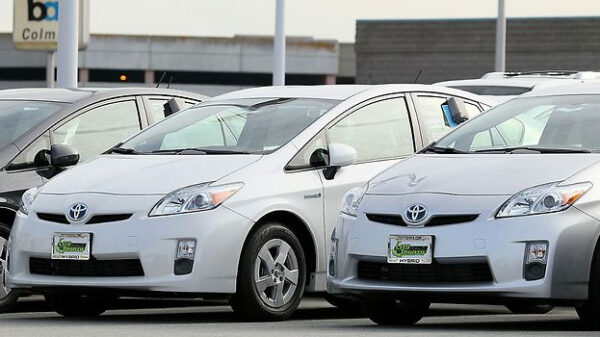 TOKYO, Oct 13 – The IMF lowered its forecasts for Asian growth and warned in a report Thursday that the region faces risks due to fallout from the eurozone debt crisis and a slowdown in the United States.
TOKYO, Oct 13 – The IMF lowered its forecasts for Asian growth and warned in a report Thursday that the region faces risks due to fallout from the eurozone debt crisis and a slowdown in the United States.
In its twice-yearly Asia and Pacific Regional Economic Outlook, the International Monetary Fund warned that risks for the region are “decidedly tilted to the downside.”
The IMF expects growth of 6.3 percent in 2011 and 6.7 percent in 2012 for Asia on average, slightly below its forecast of 6.8 percent and 6.9 percent respectively in April’s report.
It warned that an escalation in the eurozone crisis would have “clear macroeconomic and financial spillovers” to Asia, which has not “decoupled” from advanced economies and should develop stronger engines of domestic growth.
“The panic sell-offs across Asian financial markets and safe-haven flows into Japan that occurred when European troubles intensified in August-September 2011 demonstrate that there is ‘no place to hide’ when advanced markets come under pressure,” the IMF said.
“Since 2009 investors from advanced economies have built up substantial positions in Asian markets, including Indonesia and other Asian sovereign debt markets,” it said.
“A sudden liquidation of these positions could trigger a loss of confidence, and contagion could spread from bond and equity markets to currency and other markets.”
The report came on a day data showed Thursday China’s trade surplus narrowed in September as exports slowed sharply, with the world’s second-largest economy hit by economic turmoil in the United States and Europe.
The IMF slightly lowered its growth forecast for China to 9.5 percent in 2011 from April’s forecast of 9.6 percent and 9.0 percent in 2012 from 9.5.
The fund’s Asia and Pacific Department director Anoop Singh warned China faced the risk of an overheating property market if Beijing failed to extend more savings options to households.
“Financial sector reform is very important, together with other policies, to ensure that these risks do not materialise,” he told a Tokyo press conference.
Nevertheless, Singh said the scale of the shock was much less than in 2008 in percentage terms across Asian markets and that fund flows would eventually return.
The region’s policy makers faced a “delicate balancing act” to guard against risks to growth but also limit the impact of easy financial policy on inflation, the report said.
The IMF noted that inflationary pressures were “elevated” in a number of Asian economies due to accommodative monetary policies, but should ease off as food and energy prices “gradually moderate”.
While growth in Asia has eased since the second quarter of 2011, mainly reflecting weakening external demand, the IMF said domestic demand is still resilient and should continue to sustain activity across the region.
In Japan, the March 11 earthquake and tsunami “had grave social and humanitarian costs and also set back the recovery,” the IMF said.
However, “domestic demand is picking up as reconstruction efforts get under way” towards reaching the 2.3 percent growth it forecast for Japan for 2012, it said, despite recent worries over the impact of a strong yen on its recovery.
Singh said that despite those concerns, the yen was close to its historical average over the past 15 years in real trade-weighted terms. “We should not see the current level as posing an immediate risk to Japan’s recovery,” he said.
The IMF called on Japan to make further efforts to reduce its massive public debt, running at more than 200 percent of gross domestic product, through limiting spending growth and comprehensive tax reforms.
It welcomed the government’s plan to double the consumption tax to 10 percent by the middle of the decade and adjusting pension benefits but said “more needs to be done to put the net debt-to-GDP ratio on a downward path.”
India’s economy was forecast to grow 7.8 percent in 2011, lower than April’s projection of an 8.2 percent expansion, and 7.5 percent in 2012 down from 7.8.


































